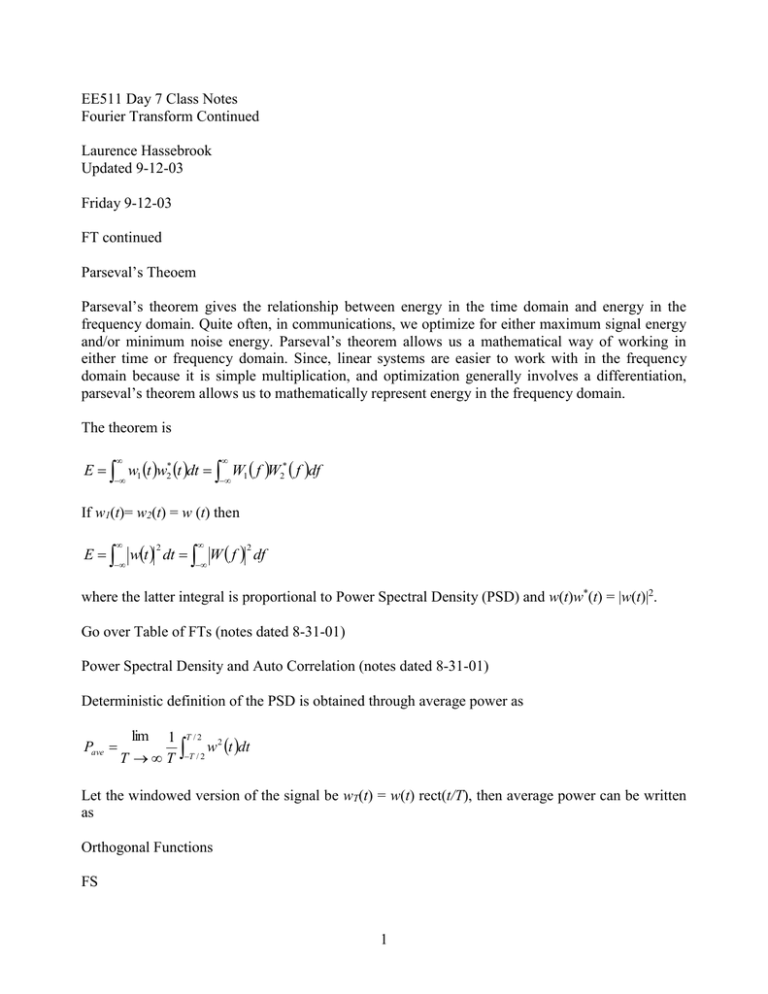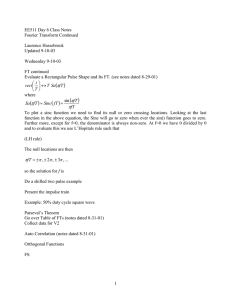Document 13715221
advertisement

EE511 Day 7 Class Notes Fourier Transform Continued Laurence Hassebrook Updated 9-12-03 Friday 9-12-03 FT continued Parseval’s Theoem Parseval’s theorem gives the relationship between energy in the time domain and energy in the frequency domain. Quite often, in communications, we optimize for either maximum signal energy and/or minimum noise energy. Parseval’s theorem allows us a mathematical way of working in either time or frequency domain. Since, linear systems are easier to work with in the frequency domain because it is simple multiplication, and optimization generally involves a differentiation, parseval’s theorem allows us to mathematically represent energy in the frequency domain. The theorem is E w1 t w2* t dt W1 f W2* f df If w1(t)= w2(t) = w (t) then E wt dt W f df 2 2 where the latter integral is proportional to Power Spectral Density (PSD) and w(t)w*(t) = |w(t)|2. Go over Table of FTs (notes dated 8-31-01) Power Spectral Density and Auto Correlation (notes dated 8-31-01) Deterministic definition of the PSD is obtained through average power as Pave lim 1 T / 2 2 w t dt T T T / 2 Let the windowed version of the signal be wT(t) = w(t) rect(t/T), then average power can be written as Orthogonal Functions FS 1 2



